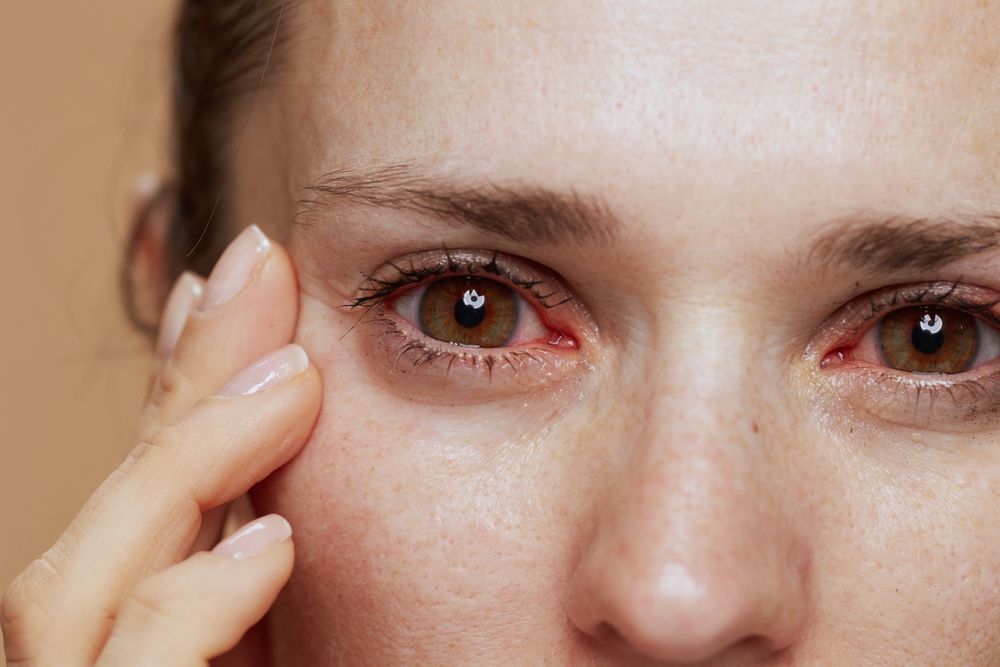
Dry eye is a common condition that can affect your daily comfort, vision, and quality of life—but the earlier it's recognized and treated, the better the outcomes. At Frame & Focus Eye Care, we help patients identify and manage dry eye symptoms at every stage, starting with early detection and personalized care.
What Is Dry Eye?
Dry eye occurs when your eyes don't produce enough tears or when the quality of your tears is poor, leading to irritation, inflammation, and discomfort. There are two main types of dry eye:
Evaporative Dry Eye: Caused by a deficiency in the oily layer of your tears, often due to meibomian gland dysfunction (MGD).
Aqueous Deficient Dry Eye: Happens when your eyes don’t produce enough of the watery component of tears, often linked to aging or autoimmune conditions.
Some people experience a combination of both types.
Why Is Dry Eye So Common?
Texas residents are more likely to experience dry eye due to a mix of environmental and lifestyle factors. The hot, dry, and windy weather common in Richmond contributes to rapid tear evaporation, leaving the eyes feeling dry and irritated. In addition, high levels of pollen and other allergens in the air can lead to inflammation and discomfort, further aggravating dry eye symptoms.
Modern lifestyles also play a role. Extended screen time, which is common across all age groups, reduces how often we blink, resulting in poor tear distribution and increased eye strain. Additionally, indoor environments cooled or heated by HVAC systems often have low humidity levels, which can dry out the air and, in turn, your eyes. These combined factors make it especially important for Texans to be aware of early signs of dry eye and seek timely care.
The Stages of Dry Eye and Their Symptoms
Dry eye is a progressive condition that tends to worsen over time if not addressed. Understanding the different stages can help you recognize when it’s time to seek treatment.
In the early or mild stage, symptoms may be subtle. You might notice slight dryness or irritation, watery eyes, and mild fatigue after using screens. Vision may become blurry at times but usually clears up with blinking.
In the moderate stage, symptoms become more frequent and noticeable. You may experience persistent discomfort, burning sensations, redness, and light sensitivity. Wearing contact lenses may become more difficult, and your eyes may be more easily irritated by dry or windy environments.
The severe stage involves more intense and chronic symptoms. These can include constant dryness, a gritty or stinging sensation, mucus discharge, and significantly blurred vision. At this stage, the risk of eye infections increases, and damage to the cornea can occur if left untreated.
When to See Your Eye Doctor
If you're experiencing symptoms from even the earliest stage of dry eye, it's a good idea to schedule an eye exam. We use advanced diagnostic tools to assess the quality and quantity of your tears, evaluate your meibomian glands, and determine the root cause of your symptoms.
Personalized treatment may include:
Artificial tears or prescription eye drops
In-office treatments for meibomian gland dysfunction
Lifestyle and environmental recommendations
Nutritional supplements and eyelid hygiene products
Early treatment not only helps relieve symptoms but can also slow the progression of the condition and protect your long-term eye health.
Schedule Your Dry Eye Evaluation Today
Dry eye can start subtly, but over time, it can significantly impact your comfort, vision, and quality of life. Understanding the early stages and acting quickly is key to keeping your eyes healthy and seeing clearly. With the right care, dry eye can be managed effectively.
If you’re noticing the early signs of dry eye, don’t wait for symptoms to worsen. Schedule a comprehensive evaluation with Frame & Focus Eye Care at our office in Richmond, Texas. We are also happy to serve the surrounding areas, Greatwood, Rosenberg, Sugar Land, Pecan Grove, Four Corners, Mission Bend, New Territory, and Sugar Land. Please call (832) 664-7900 to book an appointment today.












